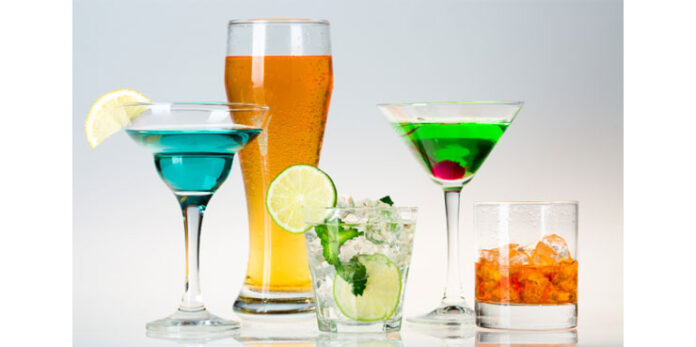The beverage alcohol industry has experienced an unprecedented last four years. We had a once-in-a-lifetime pandemic which accelerated online shopping and caused a massive spike in alcohol sales.
As the pandemic surge slowly comes off its high and sales are rebounding to pre-pandemic levels, the market is shifting once again to see certain beverage alcohol categories skyrocket in popularity with the change in consumer behavior and consumption.
In recent years, we’ve seen a substantial amount of growth and development in celebrity-backed brands, the no- and low-alcohol category, and the untamed rise of ready-to-drink beverages. In 2023, the beverage alcohol industry continued to capitalize on these trends, especially the RTD category.
While there are some easy predictions we can make about what the industry can expect in 2024, Beverage Wholesaler went right to the experts. Between the younger generations preferring better-for-you-beverages, tequila’s popularity still roaring, wine sales continuing to decrease and luxury spirits taking a back seat, there’s a considerable amount of factors that are shaping the course of alcohol consumption.
Here’s what you can look forward to in the year ahead:
Socialized Outings Are Driving Spirits Sales
Now that consumers are no longer staying holed up in their homes for weeks on end, social settings are causing them to spend money on alcohol beverages both on- and off-premise.
“When you think of somebody sharing a cocktail in a moment, it is an occasion – a social approach,” says Ray Lombard, Executive Vice President, Supplier Management & Business Development for Southern Glazer’s Wine & Spirits. “Business travel is back. In-person meetings are back. Everything that brings the social aspect into the beverage alcohol industry is back.”
Thomas Paulson with Placer.AI believes that with consumers participating in more social gatherings now, experiences will be top of mind when it comes to their drink choices.
“Consumers have become more choiceful and are prioritizing in-person experiences,” Paulson noted in a webinar. “In moving beyond the pandemic and celebrating in-person experiences, nightlife has been increasing across the U.S. As we continue to move further away from the pandemic, it’s setting up 2024 to be a better year for the spirits category.”
Tequila Will Continue to Reign Supreme
Consumers’ pallets are always changing, but Lombard says tequila is still hot and leading the pack. Even the mezcal category is gaining momentum.

“Brands such as Mezcal El Silencio, Rosaluna and Bosscal are all doing very well,” Lombard explains. “There are a lot of different varieties you can make mezcal from. It’s kind of like drinking wine – how not all wines are the same and come from different regions. Mezcal has that approach, as well.”
But it’s not all sunshine and rainbows for the tequila category. Because it’s so popular, the market has become saturated with a multitude of tequila brands, making it increasingly difficult to stand out. Dan Butkus, President and CEO of Santo Spirits, says that brands will need to work extra hard to win over customers.
“Brands lacking true authenticity or those with inferior production will start dropping out in droves in 2024 as gatekeepers and shoppers become more selective,” he advises. “Brands backed by private equity firms or those heavily leveraged will find it particularly difficult to weather the storm. Authentic tequila brands will continue to see gains, but brands with fewer legitimate credentials in the category will find it difficult to gain traction.”
Additive-free tequila will be a particular focal point for consumers in 2024, according to Butkus. As more reviewers reveal additives in certain brands, it will turn customers away.
“Additives have proliferated the tequila market, particularly to mask the bitterness of younger agave and other production shortcuts, or in an effort to conceal the flavor of agave to appeal to the vodka consumer,” explains Butkus.
Consumers Drawn to Nostalgia

According to Melanie Batchelor, Managing Director, Campari America, nostalgia has undeniably become a driving force in American culture today, spanning everything from media and entertainment to art and design. “Within the spirits industry, we’re seeing that trend manifest through an interest in vintage spirits and a growing appreciation for classic cocktails,” she says.
Heritage brands like Wild Turkey and Appleton Estate are resonating with consumers who are seeking a sense of history and authenticity that connects them to the past, according to Batchelor.
“We recently saw this with the immense popularity of Appleton Estate’s launch of ‘17 Year Old Legend,’ an exclusive and faithful recreation of the legendary 17-year-old rum crafted by J. Wray & Nephew on the Estate in the 1940s,” she says. “Our portfolio is also well-established in the world of classic cocktails, with many of our brands focusing on iconic serves that are steadily gaining momentum – Old Fashioneds, Martinis, Negronis and Mai Tais.”
Luxury Spirits Will be Left on the Shelf
Even though the economy is proving to be resilient, inflation is still a challenge for consumers. Global factors are also weighing on shoppers, resulting in a great amount of cautious customers versus those willing to spend more.
Danny Brager, a SipSource Analyst, discussed in a webinar how these issues are impacting luxury brands’ bottom lines. “The luxury end is vulnerable while convenience stores and value retailers are gaining momentum,” he explains. “Consumers are looking for the most bang for their buck.”
When you get to the middle tier, which are bottles ranging from $17 to $100, Brager says there are some offsets in growth from 2022 to 2023. Even though 2023 was still down slightly, the segments are still relatively healthy.
“The big challenge is the luxury end, which are bottles $100 and up,” notes Brager. “This segment was down more in 2023 than it was in 2022, and the pressure will remain as consumers continue to restrain their spending.”

Consumers Are Reaching for White Wines
While it should come as no surprise that wine sales are still struggling, Brager noted in a session at the Access LIVE event in January that white varietals are doing better than reds. “Prosecco growth remains healthy, and the growth in port (driven by a TikTok trend) is moderating,” he said. “Table wines at the $11 to $25 tier are performing the best. Luxury wines continue their premiumization slide, though SipSource projects that to moderate later in 2024.”
Southern Glazer’s notes some particular wines they think will be popular this year:
- Orange Wines. Known for their unique color and aromatic profiles, orange wines will continue to grow in popularity, fed by an ongoing interest in natural and organic wines.
- Fortified Wines. Expect to see fortified wines, such as port and sherry, gain prominence in cocktails and beverage menus this year.
- Sauvignon Blanc. Sauvignon Blanc maintains its popularity across the board. A balanced food-friendly white wine with a lighter body, it has enough complexity for wine lovers while also appealing to the palate of younger wine drinkers.
- Premium Sparkling Reds. Fully sparkling or frizzante red wines will gain prominence, offering a unique twist on traditional sparkling wine.
- Hybrid Varietals. Crossbred grape varietals offering new flavor profiles will potentially gain traction, pushing the boundaries of traditional winemaking.
A Desire for History
As the whiskey industry continues to evolve and innovate, distilleries are experimenting with various types of wine and spirits barrels, such as port, cognac or rum, to affect the flavor profile of the whiskey. Consumer demand is also adapting to more cask strength whiskey. Head of Brand for Waterford Whisky, Mark Newton, thinks that brand transparency, being additive free and holding importance on the quality of the raw material used will be important trends this year.
“All of us at Waterford feel whisky drinkers are becoming jaded by endless and bizarre spins on cask finishes, dressing up what is fundamentally the same spirit, with another excuse to spin a yarn,” Newton notes. “We think consumers are becoming increasingly interested in the raw material from which whisky is made – and how it is made – over and above such stories, and are increasingly seeking whiskies that are natural, made with high provenance, and with something actually real to say.”

No- and Low-Alcohol Beverages Take the Spotlight
The better-for-you beverage segment has exploded in recent years, with a Nielsen IQ report showing double-digit growth for the no-alcohol category between 2020 and 2022. In addition, CivicScience data has shown that interest in a sober lifestyle has grown, citing that nearly one-in-three adults who drink might change their habits due to research about the effects of alcohol.
“Lower- and no-alcohol products are continuing to gain popularity with consumers, and brewers are meeting much of the demand,” says Justin Kissinger, head of the Worldwide Brewing Alliance. “The category grew by more than 7% in volume across 10 key global markets in 2022 and this trend is expected to continue. Most of this growth (70%) will come from beer and cider, which make up 75% of the lower- and no-alcohol category. Meanwhile, in the EU, this rises to 97% of the market.”
Brands such as Ritual Zero Proof, Wilderton and Sommarøy are turning heads as more consumers realize how tasty no- and low-alcohol beverages can be. Ritual Zero Proof even began rolling out in 400 Walmart stores nationwide in October 2023, as stated in SevenFiftyDaily.
And there seems to be no sign of this segment slowing down.
“At an individual level, social trends like Dry January give people the chance to try new products and approaches to see what works for them and what they enjoy,” Kissinger says. “These products open up commercial opportunities because they can help extend occasions, particularly in the on-premise, by allowing consumers to remain in beer occasions while moderating their consumption of alcohol.”
As 2024 continues to take shape, more trends and pallet changes will pave the way for the future of the beverage alcohol industry. The biggest takeaway we received from experts is this: be innovative. Constantly try new flavors, looks and recipes in order to stand out on the shelf.









